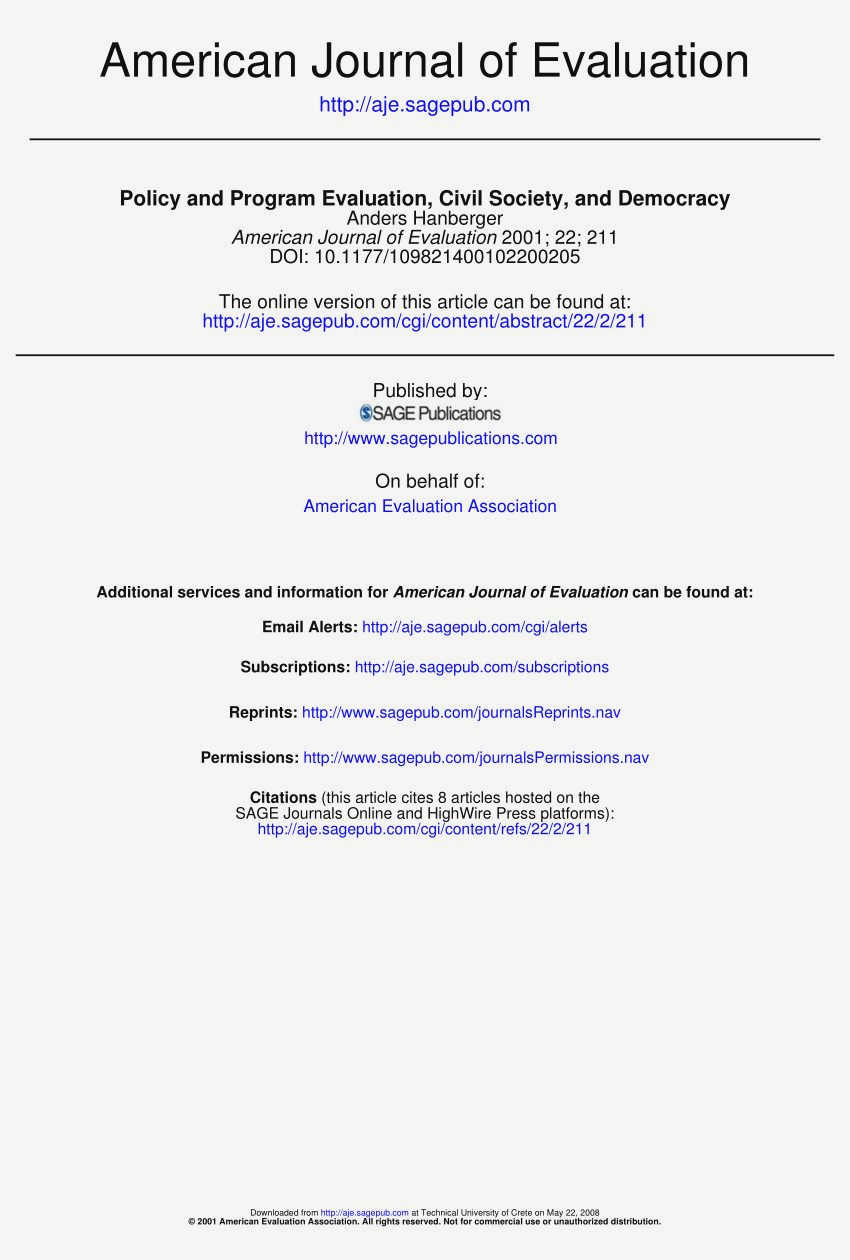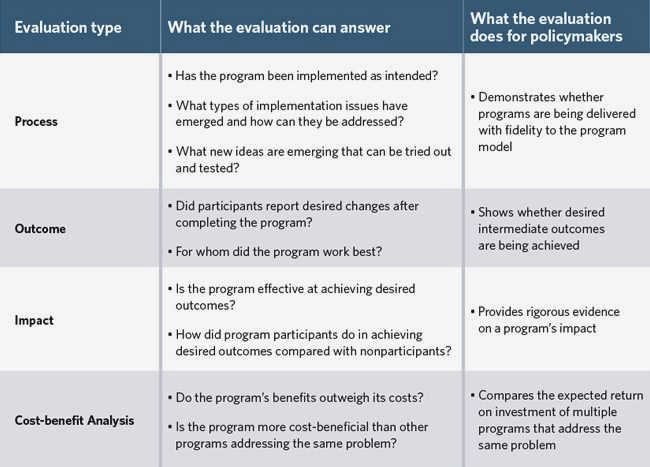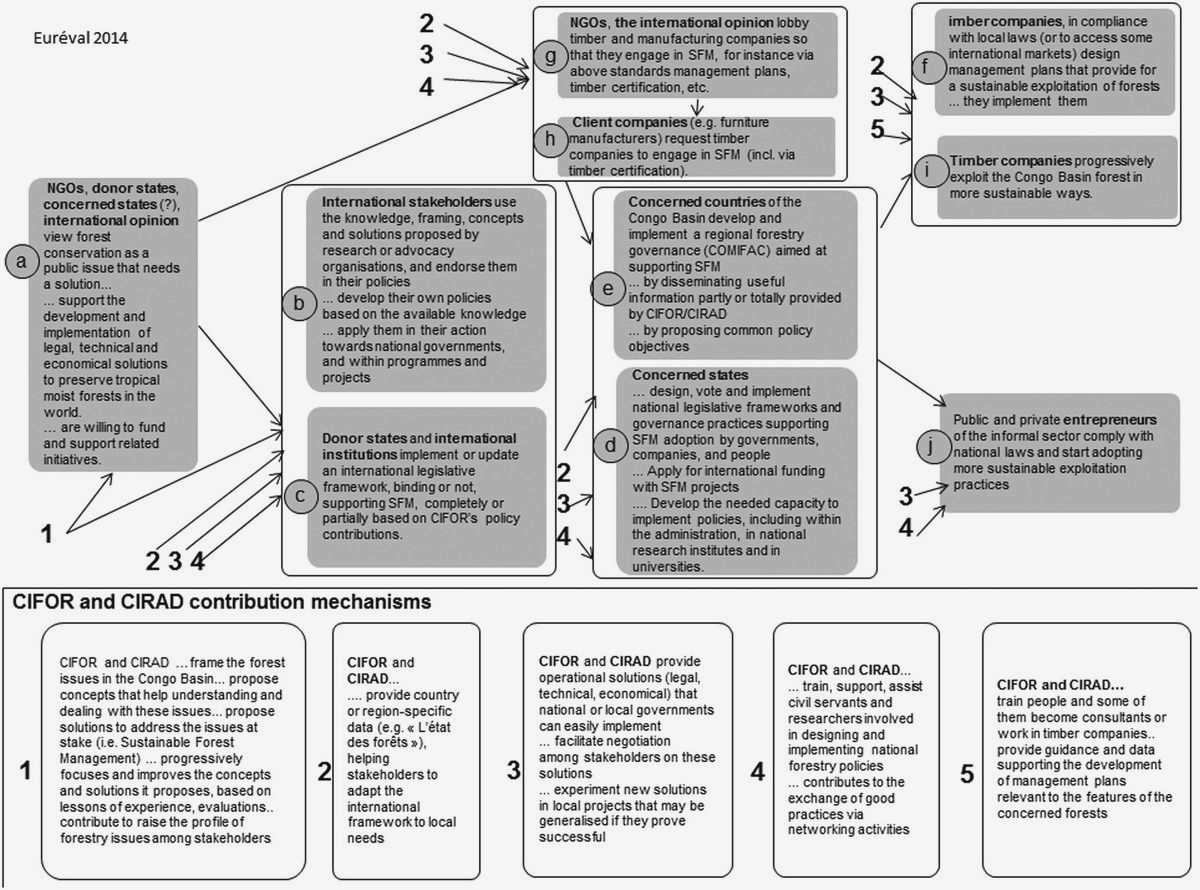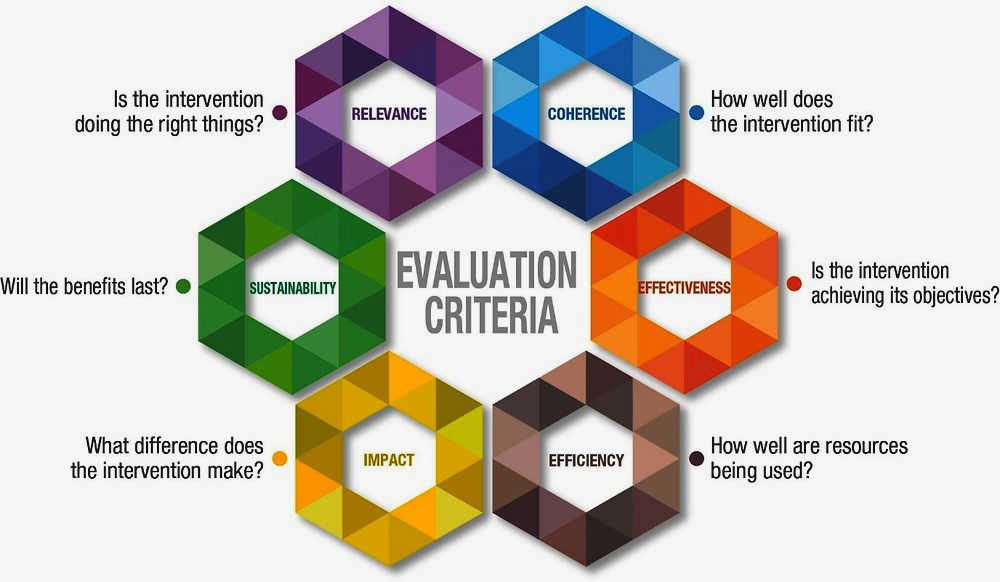In the ever-evolving landscape of civil society organizations, program evaluation plays a crucial role in measuring impact and ensuring effective change. By systematically assessing the outcomes of programs and initiatives, organizations are able to gather valuable data that can inform future decision-making and improve their overall effectiveness.
Program evaluation involves the systematic collection and analysis of data to determine the extent to which a program has achieved its intended outcomes. This process often includes the identification of key performance indicators, the development of evaluation frameworks, and the implementation of data collection methods such as surveys, interviews, and observations.
By conducting program evaluations, civil society organizations can gain a deeper understanding of the impact of their work and the effectiveness of their interventions. This information allows them to make informed decisions about resource allocation, program design, and implementation strategies, ultimately leading to more impactful and sustainable initiatives.
In addition to measuring impact, program evaluation also plays a critical role in accountability and transparency. By evaluating their programs and openly sharing the results, organizations demonstrate their commitment to learning and improvement. This transparency builds trust with stakeholders, including funders, beneficiaries, and the wider community, and ensures that resources are being used effectively and efficiently.
The Importance of Program Evaluation in Civil Society
Program evaluation plays a crucial role in civil society by providing a systematic and objective assessment of the impact and effectiveness of various initiatives. It helps organizations and stakeholders in the civil society sector to measure the outcomes and achievements of their programs, identify areas for improvement, and make informed decisions about resource allocation.
Program evaluation provides a comprehensive understanding of the outcomes and impacts of programs implemented in civil society. By measuring key indicators and assessing the extent to which program objectives have been met, evaluation enables organizations to determine the effectiveness and efficiency of their interventions. This knowledge is essential for designing evidence-based programs, making strategic decisions, and ensuring that resources are used wisely and effectively.
Moreover, program evaluation in civil society helps organizations to demonstrate accountability and transparency to their funders, stakeholders, and the general public. By evaluating and reporting on program outcomes, organizations can show that their activities have made a meaningful difference and justify the allocation of resources. This, in turn, enhances trust and credibility, which are crucial for sustaining support and attracting new partnerships.
Program evaluation also facilitates learning and knowledge sharing within the civil society sector. By documenting and disseminating evaluation findings, organizations can learn from each other’s successes and challenges. This collective learning enables the sector as a whole to build a body of evidence about what works and what doesn’t, leading to more effective and impactful programs. Furthermore, evaluation allows organizations to reflect on their own practices, adapt their strategies, and continuously improve their work.
In conclusion, program evaluation is an indispensable tool for measuring impact, ensuring effective change, and promoting accountability in civil society. By evaluating their programs, organizations can assess their outcomes, improve their interventions, and contribute to the overall development of the sector. Emphasizing the importance of program evaluation enables civil society organizations to make a stronger case for support and create a lasting impact on the communities they serve.
Understanding Impact: Why Evaluation Matters
Program evaluation plays a crucial role in understanding the impact of initiatives in civil society. It provides a systematic approach to assessing whether programs and interventions are achieving their intended outcomes and making a difference in the communities they serve. Evaluations help to determine the effectiveness and efficiency of programs, identify areas for improvement, and inform decision-making processes.
Evaluating impact: By evaluating the impact of programs, organizations can gain valuable insights into the outcomes and effects of their efforts. This includes understanding the positive changes and benefits that result from programs, as well as any unintended consequences or negative impacts that may arise. Evaluations can help organizations assess the overall effectiveness of their programs and make informed decisions about how to improve and optimize their impact.
Ensuring accountability: Program evaluation is essential for promoting transparency and accountability within civil society. By conducting evaluations, organizations can demonstrate their commitment to achieving meaningful results and ensuring that resources are being used effectively. Evaluation findings can be used to communicate the impact of programs to stakeholders, funders, and the wider community, building trust and confidence in the organization’s work.
Driving learning and improvement: Evaluation offers an opportunity for organizations to learn from their experiences and continuously improve their programs. By systematically collecting and analyzing data, organizations can identify strengths and weaknesses, uncover insights and lessons learned, and make evidence-based decisions about program design and implementation. Evaluation also enables organizations to adapt to changing needs and contexts, ensuring that their interventions remain relevant and responsive in the face of evolving challenges.
Informing decision-making: Evaluation provides valuable information that can inform strategic decision-making processes. By evaluating the impact of different programs and interventions, organizations can prioritize resources and allocate funding to initiatives that have proven to be effective and have the greatest potential for long-term positive change. Evaluation findings can also be used to guide program planning, assess the feasibility of scaling up interventions, and inform policy development.
Overall, program evaluation is an essential tool for understanding impact and ensuring effective change in civil society. By systematically assessing the outcomes and effects of programs, organizations can learn from their experiences, improve their interventions, and make informed decisions that drive positive social change.
Evaluating Program Effectiveness: Key Metrics
When evaluating the effectiveness of a program, it is important to identify key metrics that can provide meaningful insights into its impact and outcomes. These metrics serve as measurable indicators that can help assess the success or failure of a program in achieving its intended objectives.
1. Attendance and Participation Rates: One of the key metrics to consider is the attendance and participation rates of individuals in the program. This metric can provide insights into the level of engagement and interest among the target audience, helping to determine if the program is reaching its intended beneficiaries.
2. Achievement of Objectives: Another important metric is the extent to which the program has achieved its objectives. This can be assessed by evaluating whether the desired outcomes, such as increased knowledge, improved skills, or changed behavior, have been realized among the program participants.
3. Cost-effectiveness: Evaluating the cost-effectiveness of a program is crucial in determining its efficiency. This metric can be measured by comparing the financial resources invested in the program with the outcomes achieved. It helps identify whether the program is achieving its desired impact in a cost-efficient manner.
4. Stakeholder Feedback: Gathering feedback from various stakeholders, including program participants, staff, and beneficiaries, can provide valuable insights into the effectiveness of the program. This metric can help identify strengths and weaknesses, as well as areas for improvement to make the program more impactful and sustainable.
5. Long-term Impact: Assessing the long-term impact of a program is crucial to understanding its sustainability and effectiveness. This can be done by measuring the long-term outcomes or changes that have occurred among the program participants after the program has ended. It helps determine if the program has made a lasting impact on the individuals or communities it aimed to serve.
Overall, evaluating program effectiveness requires careful consideration of these key metrics, among others, to provide a comprehensive understanding of the program’s impact and ensure effective change in civil society.
Measuring Long-Term Change in Civil Society
Measuring long-term change in civil society is a crucial aspect of program evaluation. It allows organizations to assess the effectiveness and impact of their initiatives over an extended period of time. By evaluating the outcomes and outcomes of their programs, organizations can determine whether they have achieved their intended goals and whether their efforts have led to sustainable change.
Collecting and analyzing data is an essential part of measuring long-term change. Organizations must gather reliable and relevant data to evaluate the outcomes of their programs. This can include quantitative data, such as surveys and statistics, as well as qualitative data, such as interviews and case studies. By analyzing this data, organizations can identify trends, patterns, and insights that can help them understand the long-term impact of their initiatives.
Evaluating the indicators of long-term change
When measuring long-term change, organizations must identify and evaluate the key indicators that demonstrate progress towards their goals. These indicators can vary depending on the specific objectives of the organization, but may include factors such as improved access to education, increased civic engagement, or reduced poverty rates. By assessing these indicators, organizations can determine whether their programs have contributed to long-term change in civil society.
Considering unintended consequences
When evaluating the impact of their programs, organizations must also consider unintended consequences. While the primary goal may be to create positive change, there may be unintended negative effects that need to be addressed. For example, a program aimed at improving access to healthcare may inadvertently lead to increased healthcare costs. By considering these unintended consequences, organizations can make adjustments to their programs and ensure that they are truly achieving long-term positive change.

In conclusion, measuring long-term change in civil society is critical for program evaluation. By collecting and analyzing data, evaluating indicators of change, and considering unintended consequences, organizations can assess the effectiveness and impact of their initiatives. This allows them to make informed decisions, improve their programs, and ensure that they are creating sustainable and lasting change in civil society.

Maximizing the Influence of Evaluation Findings
Evaluation findings can play a crucial role in shaping and guiding the work of civil society organizations. To maximize the influence of these findings, it is important to consider several key strategies.
1. Communicating effectively:
One of the most important steps in maximizing the influence of evaluation findings is to effectively communicate the results to various stakeholders. This includes crafting clear and concise reports that highlight the key findings and their implications. Visual aids and data visualization techniques can also be employed to enhance the understanding and engagement of stakeholders.
2. Engaging stakeholders:
Involving various stakeholders in the evaluation process itself can help increase their buy-in and ownership of the findings. This can be done through conducting focus groups, interviews, or surveys to gather their perspectives and input. By involving stakeholders, organizations can also ensure that the evaluation findings address their concerns and needs, making them more likely to be acted upon.
3. Creating actionable recommendations:
Effective evaluation findings should not just identify problems or successes, but also provide actionable recommendations for improvement. These actionable recommendations should be practical, realistic, and tailored to the specific context of the organization. Clear steps should be outlined for implementing the recommendations, and support may be provided to help stakeholders navigate the change process.
4. Building a culture of learning:
Maximizing the influence of evaluation findings requires fostering a culture of learning within the organization. This involves creating an environment where evaluation is seen as a continuous learning process rather than a one-time event. Regularly reviewing and reflecting on evaluation findings, and integrating them into strategic planning and decision-making processes, can help ensure that the organization is constantly evolving and improving based on evidence.

In conclusion, maximizing the influence of evaluation findings in civil society requires effective communication, stakeholder engagement, actionable recommendations, and a culture of learning. By taking these steps, organizations can ensure that their evaluation efforts have a meaningful impact and contribute to effective change.
Building Stakeholder Buy-In for Evaluation Processes
The success of any evaluation process in civil society relies heavily on obtaining buy-in from stakeholders. Stakeholders are individuals or groups who have a vested interest in the evaluation outcomes, such as funders, program participants, staff, and community members. Without their support and cooperation, the evaluation process may lack credibility and fail to achieve its goals.
Engaging stakeholders from the outset: One way to build buy-in is to involve stakeholders in the evaluation process from the very beginning. This can be done by inviting them to participate in planning meetings, seeking their input on evaluation design and methods, and keeping them informed about the evaluation progress. By involving stakeholders in these initial stages, they feel valued and become more invested in the evaluation outcomes.
Communicating clearly and transparently: Clear and transparent communication is key to gaining stakeholder buy-in. This includes providing regular updates on the evaluation process, sharing evaluation findings in a timely manner, and addressing any questions or concerns raised by stakeholders. Open and honest communication fosters trust and promotes a sense of ownership among stakeholders.
Showcasing the benefits of evaluation: Another effective strategy for building stakeholder buy-in is to highlight the benefits of evaluation. This can be done by emphasizing how evaluation can lead to program improvement, better decision-making, and increased accountability. By demonstrating the value of evaluation, stakeholders are more likely to support and actively participate in the evaluation process.
Involving stakeholders in data interpretation and utilization: Lastly, involving stakeholders in the interpretation and utilization of evaluation findings can further enhance their buy-in. This can be achieved through workshops, focus groups, or other interactive methods. By actively involving stakeholders in this way, they are able to see firsthand how their feedback and perspectives are being incorporated, which strengthens their commitment to the evaluation process.
Overall, building stakeholder buy-in for evaluation processes is crucial for ensuring the success and effectiveness of evaluations in civil society. By actively engaging stakeholders, communicating openly and transparently, showcasing the benefits of evaluation, and involving stakeholders in data interpretation and utilization, organizations can foster a sense of ownership and collaboration that leads to meaningful and impactful evaluations.
Ensuring Accountability in Civil Society Initiatives
In the realm of civil society, accountability is a critical factor in ensuring the effectiveness and sustainability of initiatives. It involves transparency and responsibility in decision-making processes, resource allocation, and program implementation. Without accountability, civil society organizations run the risk of insufficiently addressing community needs, misusing funds, or failing to measure and communicate impact.
One way to ensure accountability in civil society initiatives is through the establishment of clear governance structures. This involves defining roles and responsibilities, promoting transparency in decision-making, and establishing mechanisms for stakeholder participation. By clearly delineating these structures, organizations can ensure that decision-making processes are inclusive, informed, and ethical.
Another important aspect of accountability is the need for proper financial management. Civil society organizations should maintain accurate records of financial transactions and adhere to established accounting principles. Regular financial audits and assessments can help identify any discrepancies or irregularities, ensuring that funds are properly allocated and utilized for their intended purposes. Transparent financial management also helps build trust and credibility with donors and the community.
Monitoring and evaluation is another key component of accountability in civil society initiatives. By regularly assessing program performance and impact, organizations can identify strengths and weaknesses, measure progress towards goals, and make evidence-based decisions. Monitoring and evaluation also help in identifying areas for improvement and provide insights into the overall effectiveness and efficiency of the initiative.
Finally, accountability can be enhanced through effective communication and reporting. Civil society organizations should regularly communicate with stakeholders, providing updates on program activities, milestones achieved, and challenges faced. By sharing this information transparently, organizations can foster trust, engage stakeholders, and solicit feedback for continuous improvement.
In conclusion, accountability is crucial in ensuring the success and sustainability of civil society initiatives. By establishing clear governance structures, practicing transparent financial management, implementing monitoring and evaluation processes, and fostering effective communication, organizations can demonstrate their commitment to accountability and effectively serve their communities.
Challenges and Limitations of Program Evaluation
Program evaluation is a valuable tool for measuring the impact and effectiveness of initiatives in civil society. However, there are several challenges and limitations that need to be taken into consideration when conducting evaluations.
Data Collection
One of the main challenges in program evaluation is collecting reliable and accurate data. This can be particularly difficult in the case of complex and multifaceted programs, where it may be challenging to identify the most relevant indicators and methods for data collection. Additionally, collecting data from multiple stakeholders can be time-consuming and resource-intensive, especially if there is a lack of cooperation or engagement from the participants.
Subjectivity and Bias
Another limitation of program evaluation is the potential for subjectivity and bias in the interpretation of data. Evaluators may have their own biases or preconceived notions that can influence their analysis and conclusions. This can potentially undermine the objectivity and credibility of the evaluation results. It is important for evaluators to be aware of their biases and take steps to mitigate their impact on the evaluation process.
Timing and Context
Timing and context are crucial factors that can affect the accuracy and usefulness of program evaluation. Evaluations should ideally be conducted at different stages of a program to capture its evolution and impact over time. However, this can be challenging due to time and resource constraints. Moreover, evaluations should also take into account the specific context in which the program operates, as external factors can influence the outcomes and effectiveness of the program.
Cost and Resources
Program evaluation can be an expensive and resource-intensive endeavor. It requires qualified evaluators, data collection tools, and analysis software, among other resources. Small organizations or initiatives with limited budgets may struggle to allocate sufficient resources for comprehensive evaluations. This can limit the scope and depth of the evaluation, potentially compromising the validity and reliability of the findings.
- Conclusion

In conclusion, program evaluation is a valuable tool for measuring the impact and effectiveness of initiatives in civil society. However, it is important to acknowledge and address the challenges and limitations that can arise during the evaluation process. By being aware of these challenges and taking steps to mitigate them, evaluators can ensure that program evaluations provide accurate and meaningful insights for informed decision-making and effective change.
Applying Evaluation Results to Drive Effective Change
Evaluation results are a vital tool for driving effective change in civil society. They provide valuable insights into program effectiveness, allowing organizations to identify what is working well and what needs improvement. By analyzing evaluation data, organizations can make informed decisions about how to allocate resources and prioritize initiatives.
One way to apply evaluation results is by using them to inform strategic planning. By understanding the strengths and weaknesses of a program or intervention, organizations can develop targeted strategies for improvement. This might involve adjusting program activities, reallocating resources, or refining program goals and objectives to better align with desired outcomes.
Another important application of evaluation results is in communication and advocacy efforts. By sharing evaluation findings with stakeholders, organizations can build credibility and demonstrate their commitment to transparency and evidence-based decision-making. Evaluation results can also be used to advocate for policy changes or increased funding, by highlighting the impact and effectiveness of specific programs or interventions.
Using evaluation results to drive organizational learning and capacity building
Evaluation results can also be used to drive organizational learning and capacity building. By analyzing evaluation data, organizations can identify gaps in knowledge and skills, and develop targeted training and development initiatives to address these areas. This might involve providing staff with additional training or resources, or implementing knowledge-sharing initiatives to promote organizational learning and best practice.
Organizations can also use evaluation results to foster a culture of continuous improvement. By regularly evaluating programs and interventions, organizations can track progress over time and identify areas for refinement and enhancement. This process of ongoing evaluation and improvement ensures that organizations are constantly learning and adapting, and that they are able to maximize their impact and achieve meaningful change in civil society.





